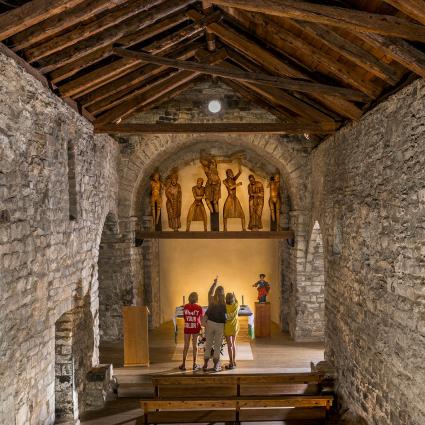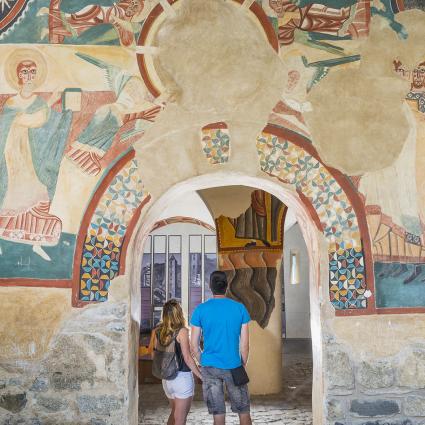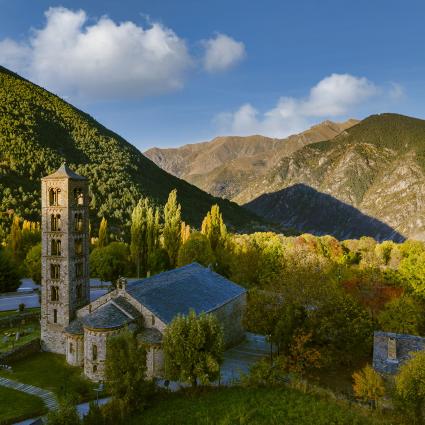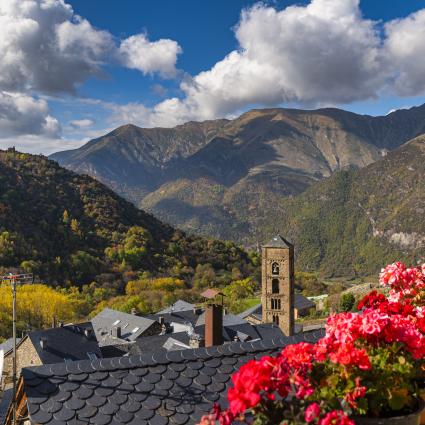What to do in la Vall de Boí in 3 days?
Discover the unique features
Morning
One day at the national park
To do this, you have two options that you can adapt based on your physical fitness or the time you have for the visit.
On foot from La Palanca de la Molina parking, via the route of the otter: This is a route of about 2 hours one way, reaching Aigüestortes plateau. Here, you can take a circular walk around Aigüestortes plateau and then hike to Sant Esperit viewpoint to enjoy stunning views of Llebreta Lake and Sant Nicolau valley.
- Taxi service from Boí: If you want to save these two hours, a taxi service from Boí will take you directly to Aigüestortes plateau. From there, you can visit Aigüestortes plateau and Sant Esperit viewpoint. If you prefer an easier route, you can walk to estany Llong. This route has gentle slopes suitable for everyone and takes about 1 hour and 30 minutes one way.
Afternoon
Let's begin with visits to the Romanesque ensemble and the villages!
To visit the churches, you have the option of purchasing individual tickets or combined tickets to visit 3 or 5 churches. You can acquire these tickets at the first church you visit, and they are valid for the entire day. Children under 10 years old have free entry.
We recommend starting with the two churches in Taüll. The most famous and iconic is Sant Climent with its video mapping. The other church, Santa Maria, is located in the upper square of the village and entry is free, so it's worth visiting. Afterward, you can visit the Santeta viewpoint and marvel at the views!
Did you know that Taüll is a certified Charming Village by the Catalan Tourism Agency? Take a stroll through its streets, admire the architecture of its houses, and make the most of your visit to enjoy its charm!
Morning
The other entrance to the national park is from Cavallers reservoir towards Estany Negre (Black Lake)
This route is a bit more demanding for those who enjoy hiking and offers a wild, high-mountain landscape quite different from the Aigüestortes entrance, which we are sure will not disappoint you. The marmot route takes about 2 hours and 30 minutes one way, passing through Riumalo plateau and reaching Estany Negre (Black Lake) and the Ventosa i Calvell refuge, from where you'll have spectacular views!
For a quieter option, if you prefer not to extend the hike, you can hike up to Riumalo plateau, which also offers great views.
Remember, to access this route, you can drive to the Cavallers reservoir parking (subject to availability; if full, you'll need to park in Caldes de Boí and walk to the reservoir, adding an extra hour of walking). Alternatively, you can contact a taxi service for transportation
Afternoon
Visit the thermal station
On your way down from the route through Cavallers, you can make a stop at the Caldes de Boí Thermal Station. Here, you can relax in its thermal waters and enjoy any of the services they offer. Alternatively, you can take a stroll through its gardens and explore the springs and their properties via an orientation circuit provided by the reception at Hotel Manantial.
Morning
Continue with visits to the Romanesque ensemble
Since you've already visited Sant Climent and Santa Maria on the first day, today take the opportunity to visit the other churches:
- Sant Joan de Boí
- Santa Eulàlia d’Erill la Vall
- Sant Feliu de Barruera
- La Nativitat de Durro
- Santa Maria de Cardet (check schedules)
- L'Assumpció de Cóll (check schedules)
As you're traveling by car, whether you decide to visit the church of La Nativitat in Durro or not, we highly recommend making the trip. We guarantee it's worth it!
Durro has been recognized as "One of the Most Beautiful Villages in Spain." Take a walk through its steep streets and admire its houses, where livestock farming is a prominent feature.
Additionally, just a few minutes from the village, about a 20-minute walk away, you'll reach the Romanesque hermitage of Sant Quirc de Durro, also part of the UNESCO World Heritage Romanesque ensemble. It's one of the best viewpoints in the valley, where you can see all three World Heritage sites: the Falles (traditional festival), the Romanesque churches, and the Starlight designation for stargazing quality.




